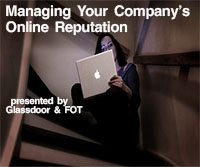HRE Column: On the HR and Marketing Connection
Here is my semi-frequent reminder and pointer for blog readers that I also write a monthly column at Human Resource Executive Online called Inside HR Tech that can be found here.
I kind of liked this month's column, (I suppose I like all of them, after all I wrote them), but felt like sharing this one on the blog because it touches upon what has been in the past a pretty popular topic with readers here - the connections and synergies between HR and Marketing.
Here is a piece from the HRE Column, HR and the Marketing Mind-set:
There are four important stages that marketers should traverse when building relationships with customers and potential customers. I think these stages can also be highly relevant and applicable to HR leaders, and they can also be supported by HR technologies and thought of as one way to help guide and organize your thinking if your goal is to “think more like a marketer.” Here are the four stages and some ideas of how they might fit into an HR leader’s program:
1. Collect and Analyze Data
While marketing has embraced data, data analysis and using data to make investment decisions for quite some time, it is only more recently that HR leaders and organizations have joined their marketing colleagues in this mind-set. But, since HR has embraced data at least conceptually, it is probably time to think about data more strategically—much like marketers do.
A big part of the Oracle marketing presentation was not just about how collecting data itself is the goal, but about what the data empowers you to do once it’s been collected. More specifically, the marketing technologies that enable increased understanding of customers and prospects for the purposes of targeted communication and messaging suggests HR leaders consider similar segmentation and targeting with their own outreach efforts.
Unique and more specific messaging that “fits” your audience more specifically is much more likely to get noticed, read and acted upon. Think about how your next “All Employees” email blast can be segmented and made more individually meaningful for the people in your organization, based on some defining criteria or past behavior that makes sense....
Read the rest over at HRE Online.
Good stuff, right? Humor me...
If you liked the piece you can sign up over at HRE to get the Inside HR Tech Column emailed to you each month. There is no cost to subscribe, in fact, I may even come over and wash your car or cut the grass for you if you do sign up for the monthly email.
Have a great weekend and Happy Mother's Day to all the Moms out there!

 Steve
Steve



